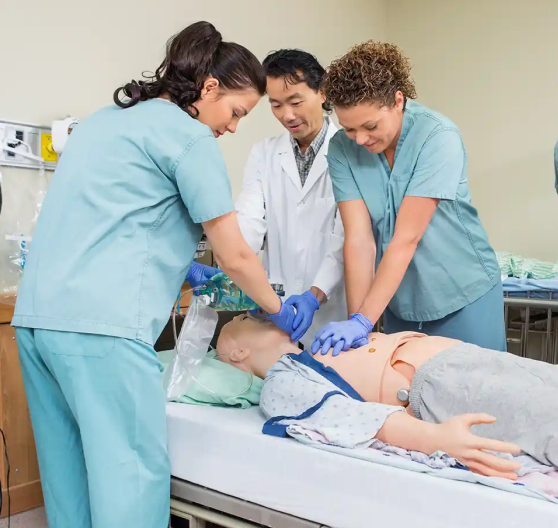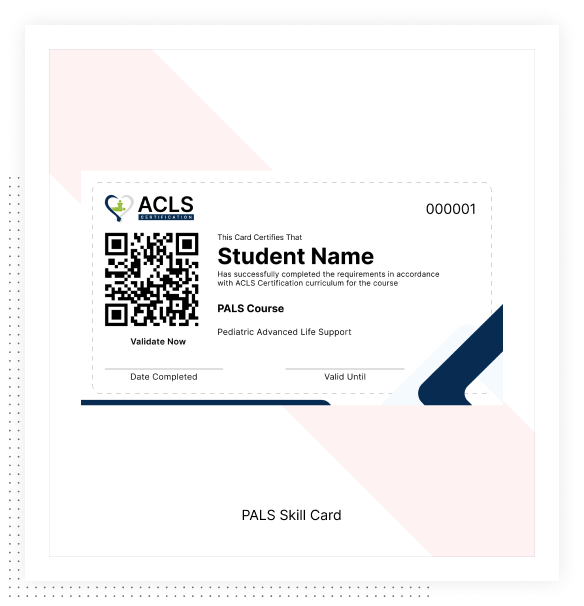
How to become PALS Certified?
To become PALS certified, you need to take the following steps:
address.
Register Now




| Chapters | CE Credits | Validity | Price | Duration | ECC | Exam Attempts | Wallet Card |
|---|---|---|---|---|---|---|---|
| 17 | 4.0-8.0 | 2 Year | $119.00 | 3-4 Hrs | Compliant | Unlimited | Download/Mail/Print |

To become PALS certified, you need to take the following steps:
address.
Register Now

Take your PALS certification exam after you complete the course.
Register Now
Learners get global access to the course material 24/7 and gain a valid and recognized certification. You also gain knowledge from well-trained tutors and get active feedback.
A Pediatric Advanced Life Support (PALS) course is a training program that provides healthcare professionals with the skills and knowledge necessary to manage and respond to pediatric emergencies.
Yes, many online portals offer PALS courses that can be completed entirely online. These courses typically include interactive modules, video lectures, and practice exams.
The length of an online PALS course can vary depending on the provider and the level of certification you are seeking. However, most courses can be completed in a day.
Yes, most PALS courses require you to pass a written exam at the end of the course. Some courses may also include a practical skills assessment that must be completed in person.
Yes, if you pass the written exam and any required practical skills assessments, you will receive a certification indicating that you are qualified to provide pediatric advanced life support. This certification is typically valid for 2 years before it must be renewed.
A PALS course is designed for healthcare professionals who may encounter pediatric emergencies in their work, including doctors, nurses, EMTs, paramedics, and other healthcare providers.